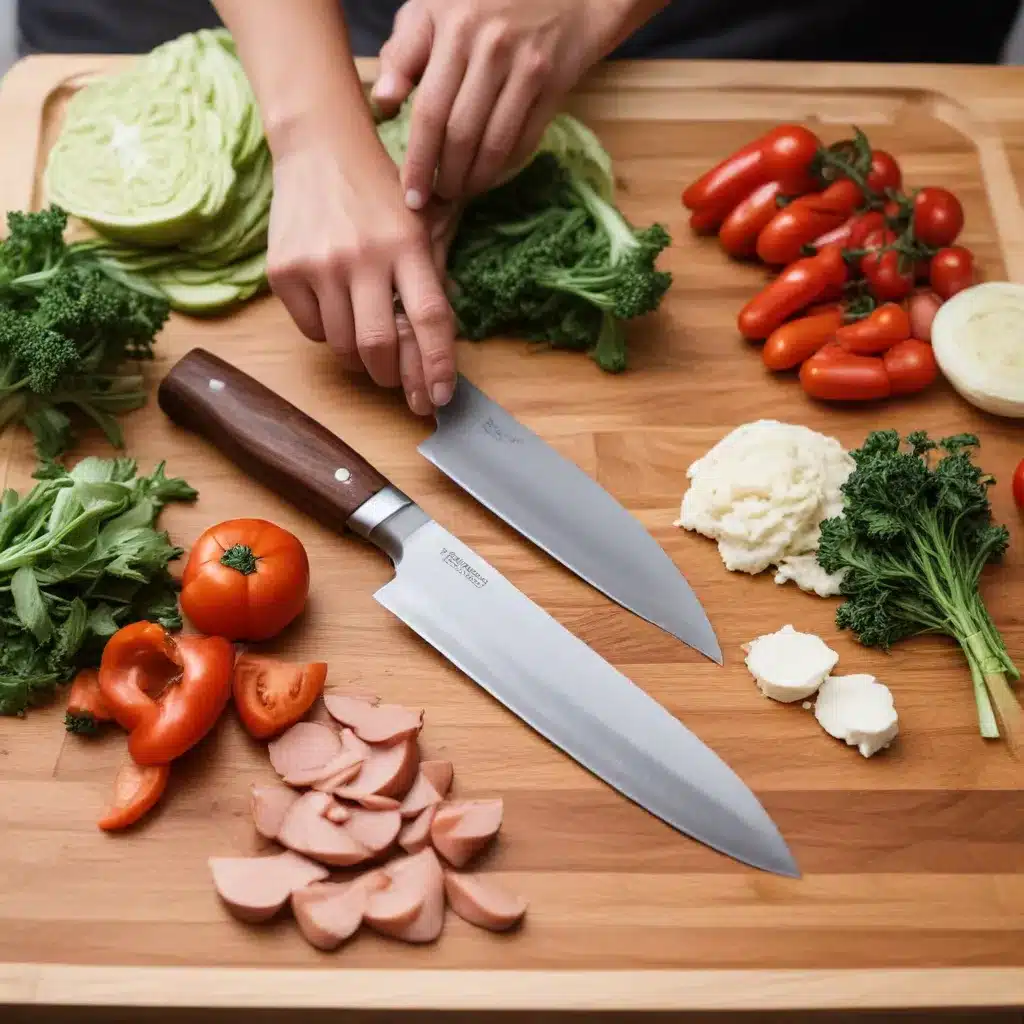
As a seasoned culinary professional, I’ve learned that mastering basic knife skills can dramatically improve your efficiency and productivity in the kitchen. Whether you’re a novice home cook or an experienced chef, honing your knife techniques can save you valuable time and effort, allowing you to focus on the joyful aspects of meal preparation.
In this comprehensive guide, I’ll share practical tips, expert insights, and time-saving strategies to help busy home cooks become true kitchen warriors. From essential knife selection to cutting-edge chopping methods, you’ll discover how to streamline your food prep and elevate your culinary game.
Choosing the Right Knives for Your Needs
The first step to improving your knife skills is selecting the appropriate tools for the job. While a single high-quality chef’s knife can tackle a wide range of tasks, having a versatile set of knives can significantly enhance your efficiency in the kitchen.
Here’s a breakdown of some essential knife types and their recommended uses:
| Knife Type | Best Use |
|---|---|
| Chef’s Knife | Versatile for chopping, slicing, and dicing a variety of ingredients |
| Paring Knife | Precise cutting and peeling of small items like fruits and vegetables |
| Serrated Knife | Slicing bread, tomatoes, and other soft-skinned produce |
| Santoku Knife | Versatile cutting and mincing tasks, with a thin, lightweight blade |
| Cleaver | Powerful chopping of tough meats, bones, and hard vegetables |
When selecting knives, prioritize quality over quantity. Invest in a few well-made, sharp knives that will serve you well for years to come. Avoid inexpensive, dull knives that can be dangerous and inefficient.
Mastering the Basic Knife Cuts
Knowing how to execute the fundamental knife cuts can streamline your food preparation and ensure consistent results. Here are some of the most essential techniques to master:
Dicing
Dicing involves cutting ingredients into small, uniform cubes, typically around 1/4 to 1/2 inch in size. This cut is commonly used for vegetables, fruits, and proteins. To dice efficiently:
* Start by slicing the ingredient horizontally, then vertically, and finally crosswise.
* Maintain a steady, even slicing motion to create clean, consistent cubes.
* Keep your fingers curled under to protect them from the blade.
Mincing
Mincing is the process of finely chopping ingredients into small pieces, often used for herbs, garlic, or ginger. To mince effectively:
* Use a rocking motion with your knife, moving the blade back and forth to create a fine chop.
* Keep your grip firm on the handle and use your other hand to gently guide the blade.
* For herbs, stack the leaves and roll them tightly before chopping to create a fine mince.
Slicing
Slicing involves cutting ingredients into thin, even pieces, perfect for applications like vegetable garnishes or layering in sandwiches. To slice efficiently:
* Hold the ingredient steady with your non-cutting hand, using your fingertips to guide the blade.
* Apply gentle, even pressure as you move the knife through the ingredient.
* Adjust your grip and angle as needed to maintain consistent slice thickness.
Julienne
Julienning is the technique of cutting ingredients into long, thin, matchstick-like strips. This cut is often used for vegetables in stir-fries, salads, or as garnishes. To julienne:
* Slice the ingredient into thin strips, then stack the strips and cut them lengthwise into thin, even batons.
* Maintain a steady, controlled slicing motion to create uniform julienne pieces.
* For consistent results, consider investing in a julienne slicer or mandoline.
Mastering these basic knife cuts will not only save you time in the kitchen but also improve the overall presentation and texture of your dishes. Practice these techniques regularly, and you’ll soon be dicing, mincing, slicing, and julienning like a pro.
Time-Saving Prep Strategies
Beyond honing your knife skills, there are several other strategies you can employ to streamline your meal preparation and save valuable time in the kitchen. Here are some top tips:
Batch Prepping
One of the most effective time-saving methods is to batch prep your ingredients at the beginning of the week. Spend an hour or two on your day off chopping, slicing, and storing your most commonly used produce, herbs, and proteins. This “mise en place” approach will significantly reduce the time required for daily meal assembly.
As recommended on Buzzfeed, “It really sets me up for success for the rest of the week.” By having your ingredients prepped and ready to go, you can focus on the cooking process rather than the tedious prep work.
Invest in Helpful Kitchen Tools
While a sharp knife is essential, there are other kitchen tools that can streamline your food preparation. Consider investing in the following time-saving gadgets:
- Food Processor: Quickly chop, slice, shred, or purée ingredients with the push of a button.
- Mandoline Slicer: Produces perfectly uniform, paper-thin slices of vegetables and fruits.
- Vegetable Peeler: Easily remove skins and peels from a variety of produce.
- Garlic Press: Efficiently mince garlic without the hassle of hand-chopping.
As one Redditor noted in the r/AskCulinary thread, “Any particular equipment that saves enough time that you would highly recommend it? After making stir fry, there are tons of veggies to cut up, are food processors worth it?”
Multitasking and Parallel Processing
When it comes to cooking, effective multitasking can save you significant time. Instead of tackling each task linearly, try to work on multiple steps simultaneously. For example, while waiting for water to boil, chop your vegetables or prepare your spices.
As one experienced chef shared on Quora, “Do you find it faster to cut everything, prepare all the spices THEN begin the cooking process or do you multi-task cooking/cutting/etc…? Maybe this is specific to the dish, but how do you treat this task normally?”
The key is to identify which tasks can be done concurrently and develop a rhythm that keeps you efficient and organized throughout the cooking process.
Streamlining Assembly
For dishes that require layered or assembled components, such as tacos or burrito bowls, consider streamlining the assembly process. Instead of adding each ingredient one by one, try pre-portioning your toppings and fillings into individual serving containers. This allows you to quickly build your dish without the need to constantly pause and add ingredients.
As suggested in the r/AskCulinary thread, “When serving a dish that needs to be assembled, is there a good way to do it? For this I’m thinking tacos, to make 4 tacos takes time to heat the shell, add one ingredient, add another, add another, etc…. Repeat 4 times.”
By adopting this pre-portioning approach, you can dramatically reduce the time spent on individual assembly, allowing you to plate your dishes more efficiently.
Developing Your Knife Skills: Practice Makes Perfect
Improving your knife skills is an ongoing process that requires patience and dedication. The more you practice, the more confident and efficient you’ll become in the kitchen.
Start by focusing on the basic knife cuts, and gradually incorporate more advanced techniques as you gain experience. Regularly sharpen your knives to maintain their optimal cutting edge, and consider taking a knife skills class or workshop to refine your techniques.
Remember, becoming a true kitchen warrior is not about speed alone; it’s about finding the right balance of efficiency, precision, and creative flair. By mastering your knife skills and adopting time-saving prep strategies, you’ll be able to spend more time enjoying the process of cooking and less time dreading the preparation.
For more helpful culinary resources and tips, be sure to visit the Kitchen Warrior blog. Happy cooking!


